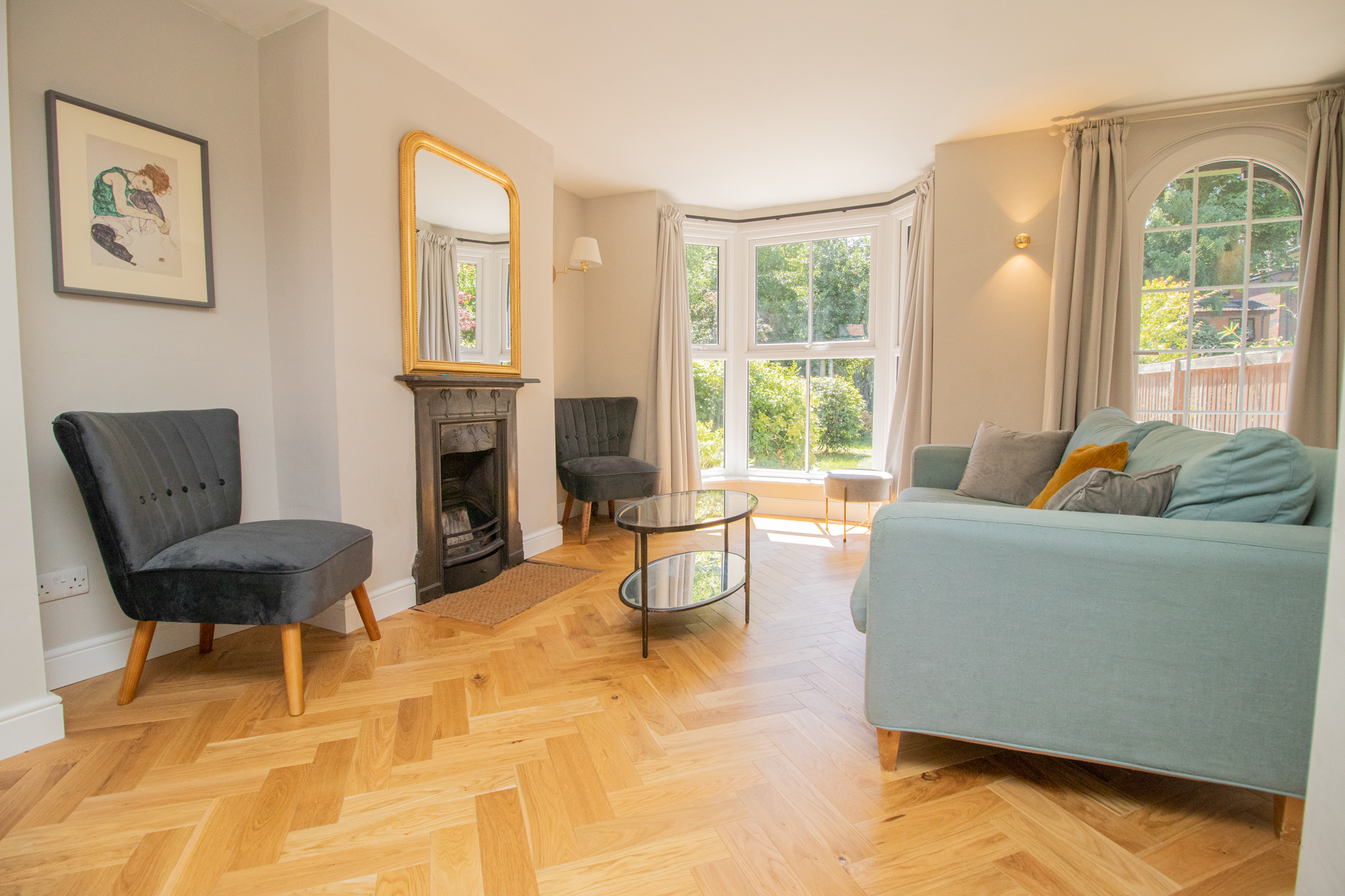How to give your period home contemporary style..
In the environs of Manchester – Chorlton, Didsbury, Whalley Range – there are many homes that were built towards the end of the Victorian period, or the start of the Edwardian age. We hear a lot about ‘period features’ and ‘period style’, but what if your preferred style is more contemporary? What if you prefer a modern look to your rooms, but the home you own – or are considering buying – is filled with cornicing, ceiling roses, picture rails and dado rails? These period frills and furbelows, much loved by many, aren’t exactly conducive to many of the current interiors trends, but you would be making a mistake to remove them, as it’s the period features that can so appeal to potential house-buyers, so you need to protect your investment.
Paint
You may have heard the term ‘colour drenching’, of late. It is applied when an interior designer, or forward thinking homeowner, paints every element of the room in the same colour, or tones of the same colour – walls, ceiling, skirting boards, rails, roses, door frame and door, and then applies the same process to the soft furnishings and accessories. It’s usually most apparent, and dramatic, when a bold colour choice is made – a deep green or dark navy. And these colours are perfect in period homes, as these are the tones that would have been chosen by the original homeowners, seeking to hide the dust and smut created by the open fires in every room. However, while the Victorians might have chosen a light colour above the dado rail, and a dark colour below, by colour drenching you are effectively wrapping the whole room as one, if not hiding period features, at least taking the eye away from them. Don’t panic though, if the thought of all that colour gives you the shudders, take the same approach with a bright white and use accessories to give pops of colour and personality.
Furniture
Period-style furniture seems the obvious choice in a period home, but when you’re seeking more contemporary style, should it be avoided? Well, that depends on your personal like or dislike of period-style furniture. Could you actually point out a sofa and tell us what era it came from? Victoria sofa design has never actually strayed far from our furniture stores, apart from a short period in what’s now known as ‘mid-century’. The Victorians loved a well-padded sofa and generously sized armchair..They liked firm, plumped up seats with springs lashed together to provide a bounce, stuffed with wool between. This was much more comfortable and long-lasting than the previous use of horsehair for cushion fillings, which could soon become hard and lumpy. During the Victorian era we see the fruits of the Industrial Revolution cascading through the ranks of society, and sofas (or smaller versions, known as settees) and upholstered armchairs become an element in every home with a front ‘parlour’ – the good room only guests were allowed into, a tradition that lasted well into the 20th century! Today, Victorian style furniture can be identified by its generous curves, small rounded legs (leaving enough room to run the dusting broom underneath to catch those pesky dust bunnies) and firm, rounded padded arms. Even two seater sofas can be quite generously proportioned, and where some see ‘classic’ others will see ;old-fashioned’, so really anything goes as long as you love it. Period homes do tend to have smaller rooms, however, so try to choose something with legs, not with a full drop to floor level. Raising furniture up away from the floor this way gives a greater impression of space.
Accessories
Your choice of accessories is where you can really demonstrate your personal style. Choose artwork that is wholly now – bright abstracts, eye-catching posters, a gallery wall of your favourite photos, in an Insta-style grid. Mirrors carefully placed can add light and style, but avoid the classic rectangle over the fireplace; place instead three different sized round mirrors, or a quirky sunburst style. Or pop your TV over the fireplace and go large – there’s nothing more frustrating than a small screen squeezed into a niche on one side of the room’s focal point, is there?
Control the clutter
The Victorians would fill their rooms – occasional tables, aspidistras on tall stands, desks and as many chairs as they could fit. Surfaces would be filled with photos and curios and souvenirs from trips to the seaside (another new thing our ancestors fully embraced.) . Décor was dark, with heavy drapes at the windows and tassels galore. Keep it contemporary with minimal dressing of surfaces and sleek window dressings.
(Picture used from Lidgate Grove, Didsbury Village).
Eddie – Friday 1st July 2022.



